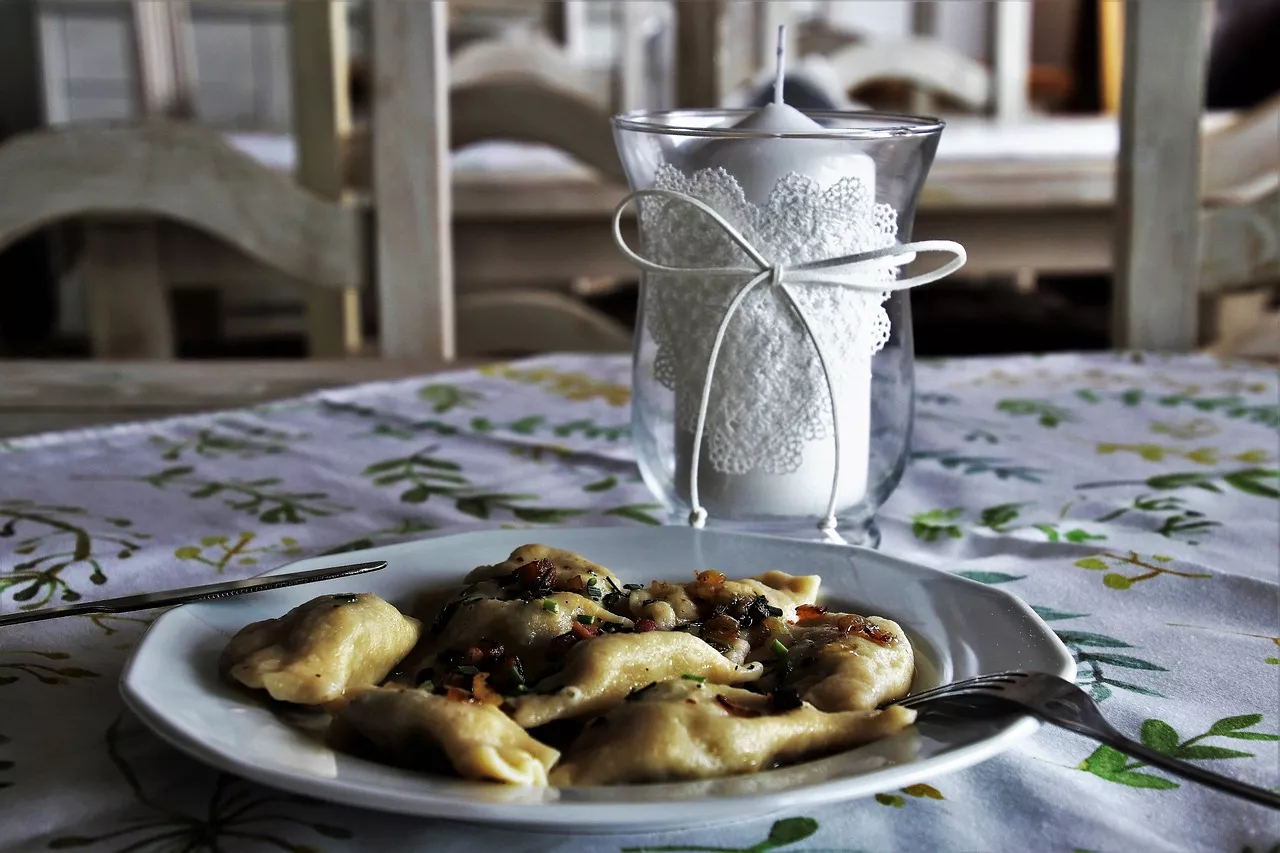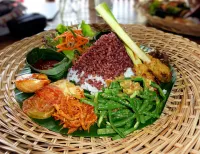Introduction
In the heart of Eastern Europe lies a culinary treasure that combines tradition with innovation - Polish cuisine. Known for its rich flavors, hearty dishes, and unique ingredients, Polish food offers a gastronomic experience like no other. From pierogi to bigos, discover the diverse range of flavors that make Polish cuisine a standout.
Polish cuisine is a dynamic fusion of influences from neighboring countries, such as Germany, Russia, and Ukraine, combined with deep-rooted Polish traditions. The result is a culinary tapestry filled with amazing dishes that reflect both the simplicity of peasant cooking and the elegance of royal feasts.
One of the key aspects of Polish cuisine is the emphasis placed on locally sourced and seasonal ingredients. From earthy mushrooms and aromatic herbs to hearty meats and flavorful dairy products, Polish dishes are a celebration of the country's vibrant agriculture.
Whether you're indulging in a crispy and succulent piece of fried pork chop served with creamy mashed potatoes and sauerkraut, or savoring the delicate sweetness of a traditional Polish cheesecake called sernik, Polish cuisine encompasses a range of dishes that are sure to tantalize your taste buds.
Embark on a culinary journey through Poland and discover the unique ingredients and dishes that have made this cuisine a true delight for food enthusiasts worldwide.
Traditional Polish Ingredients
Polish cuisine is rooted in the use of fresh, locally sourced ingredients. The country's rich agricultural landscape provides an abundance of produce that forms the foundation of many traditional Polish dishes.
1. Potatoes
Potatoes are a staple ingredient in Polish cuisine and are used in a variety of dishes. From creamy mashed potatoes to crispy potato pancakes called placki ziemniaczane, this versatile root vegetable adds a comforting element to many Polish meals.
2. Cabbage
Cabbage is another essential ingredient in Polish cooking, often used in hearty dishes such as sauerkraut and bigos. Sauerkraut, fermented cabbage, adds a tangy and acidic flavor to dishes, while bigos, a traditional hunter's stew, combines sauerkraut with different types of meat, mushrooms, and spices.
3. Mushrooms
Poland's vast forests are home to a wide variety of mushrooms, making them a prominent ingredient in Polish cuisine. From the earthy flavor of boletus mushrooms to the delicate taste of chanterelles, mushrooms are used in soups, sauces, and main dishes, adding depth and richness to the flavors.
Popular Polish Dishes
Polish cuisine has a wide array of dishes that have gained popularity both within the country and internationally. These dishes showcase the unique flavors and culinary traditions of Poland.
1. Pierogi
Pierogi are perhaps the most iconic Polish dish, enjoyed by people of all ages. These dumplings are typically filled with various ingredients, such as potatoes, cheese, meat, mushrooms, or fruit. They can be boiled, baked, or fried, and are often served with sour cream or melted butter.
2. Bigos
Bigos, also known as "hunter's stew," is a hearty dish made with sauerkraut, fresh cabbage, various meats, and mushrooms. It is a perfect example of the fusion of flavors in Polish cuisine, combining the tanginess of sauerkraut with the richness of meat and the earthy taste of mushrooms.
3. Kielbasa
Kielbasa, or Polish sausage, is a beloved staple in Polish cuisine. Made with a combination of pork, beef, or veal, kielbasa comes in various forms and flavors. It is often grilled, pan-fried, or added to soups and stews, giving dishes a distinct smoky and savory taste.
Regional Variations in Polish Cuisine
Poland's diverse regions have their own unique culinary traditions, resulting in a wide range of regional dishes and flavors. These regional variations add depth and diversity to Polish cuisine.
1. Mazovian Cuisine
Mazovian cuisine, originating from the region surrounding Warsaw, is known for its hearty dishes and rich flavors. Traditional Mazovian cuisine includes dishes such as żurek, a sour rye soup, and flaki, a tripe soup, both of which showcase the region's love for bold and robust flavors.
2. Kashubian Cuisine
Kashubian cuisine, from the Kashubia region in northern Poland, is characterized by its focus on freshwater fish and potatoes. Popular dishes include ryba po kaszubsku, a fish dish with a creamy sauce, and kartoflak, a potato pancake served with sour cream or mushroom sauce.
3. Silesian Cuisine
Silesian cuisine, from the Silesia region in southwestern Poland, is known for its hearty and filling dishes. One of the region's most famous dishes is kluski śląskie, a type of potato dumpling served with gravy or butter. Silesian cuisine also features a variety of meat-based dishes, such as pork knuckles and sausages.
Modern Innovations in Polish Cooking
While Polish cuisine is deeply rooted in tradition, modern chefs and food enthusiasts are bringing innovation to the table, infusing traditional dishes with contemporary twists.
1. Fusion Cuisine
Fusion cuisine, blending Polish flavors with international influences, has gained popularity in recent years. Chefs are integrating ingredients and cooking techniques from different cultures to create unique and exciting dishes that showcase the versatility of Polish cuisine.
2. Fine Dining
Poland's culinary scene has seen a rise in fine dining establishments that elevate traditional Polish dishes to new heights. These restaurants offer a sophisticated dining experience, combining the flavors of traditional Polish ingredients with modern cooking techniques and artistic presentation.
3. Plant-Based Polish Cuisine
As the popularity of plant-based diets grows, so does the demand for vegan and vegetarian Polish dishes. Chefs are reimagining traditional meat-based dishes, such as pierogi and bigos, using plant-based alternatives while retaining the authentic flavors and textures of the original recipes.
Traditional Polish Desserts and Pastries
Polish cuisine is not just about savory dishes; it also boasts a delectable array of desserts and pastries that satisfy any sweet tooth.
1. Sernik
Sernik, or Polish cheesecake, is a beloved dessert that has been enjoyed for generations. Made with a combination of cream cheese, eggs, sugar, and a touch of lemon zest, sernik has a delicate sweetness and a velvety texture. It is often served with a dusting of powdered sugar or fruit compote.
2. Mazurek
Mazurek is a traditional Polish Easter cake made with a shortcrust pastry base and topped with various sweet toppings, such as fruit preserves, nuts, or poppy seeds. It is a rich and indulgent dessert that is enjoyed during festive occasions.
3. Pączki
Pączki are deep-fried doughnuts filled with sweet fillings, such as rose petal jam, custard, or plum butter. They are traditionally eaten on Fat Thursday, a day before the start of Lent, and are a delightful treat enjoyed by both children and adults.
Polish Beverages and Spirits
In addition to its culinary delights, Poland is also known for its wide range of beverages and spirits that complement the country's vibrant cuisine.
1. Vodka
Vodka is Poland's national drink and holds a special place in Polish culture. Polish vodka is renowned for its purity and quality, often made from potatoes or grains. It is enjoyed straight, chilled, or as a base for cocktails, and is an integral part of Polish celebrations and traditions.
2. Żubrówka
Żubrówka, also known as bison grass vodka, is a unique Polish spirit infused with the essence of bison grass. It has a distinct herbal flavor and is often enjoyed neat or mixed with apple juice, creating a refreshing and aromatic drink.
3. Piwo
Piwo, or beer, is another popular beverage in Poland. Polish beer is known for its high quality and diverse range of flavors. From light and refreshing lagers to rich and flavorful porters, Polish beer offers something for every beer lover.
Unique Cultural Influences on Polish Cuisine
Polish cuisine has been shaped by various cultural influences throughout history. From neighboring countries to international trade routes, these influences have left a lasting impact on Polish culinary traditions.
1. Jewish Cuisine
Jewish cuisine has had a significant influence on Polish cooking, particularly in cities such as Krakow and Warsaw. Traditional Jewish dishes, such as gefilte fish and challah bread, have become an integral part of Polish culinary heritage.
2. Russian and Ukrainian Influences
Poland's close proximity to Russia and Ukraine has resulted in a blending of flavors and cooking techniques. Borscht, a beet soup, and pierogi, both popular in Russian and Ukrainian cuisines, have become beloved dishes in Poland as well.
3. German Influences
Germany's historical influence on Poland is evident in the country's culinary traditions. Dishes such as sauerkraut, sausage, and pretzels have become synonymous with Polish cuisine, showcasing the fusion of German and Polish flavors.
Where to Experience Polish Cuisine
To fully appreciate the flavors and diversity of Polish cuisine, a visit to Poland is a must. The country is home to numerous restaurants, markets, and food festivals that offer an authentic taste of Polish cooking.
1. Warsaw
The capital city of Warsaw boasts a vibrant food scene with a wide range of restaurants and eateries offering traditional Polish dishes. From upscale dining establishments to cozy neighborhood bistros, Warsaw is a culinary hub that showcases the best of Polish cuisine.
2. Krakow
Krakow, with its rich history and charming streets, is another city where you can experience the delights of Polish cuisine. The city's traditional market square, Rynek Główny, is filled with food stalls and restaurants serving a variety of Polish dishes, giving visitors a true taste of the local flavors.
3. Gdansk
Gdansk, located on the Baltic Sea, offers a unique blend of Polish and maritime flavors. The city's vibrant seafood scene, combined with traditional Polish dishes, creates a culinary experience that is both fresh and satisfying. Be sure to try the local specialty, smoked herring, for a taste of Gdansk's maritime heritage.
Celebrating the Rich Flavors of Polish Cuisine
Polish cuisine is a testament to the country's rich culinary heritage, blending tradition with innovation to create a diverse and flavorful gastronomic experience. From the use of locally sourced ingredients to the fusion of cultural influences, Polish cuisine offers a unique and unforgettable journey for food enthusiasts.
Whether you're savoring the delicate sweetness of a traditional Polish cheesecake or indulging in a hearty dish of pierogi, Polish cuisine is sure to delight your taste buds and leave you craving for more. So, embark on a culinary adventure through Poland and discover the unique ingredients and dishes that make this cuisine a true delight for food lovers worldwide.

 Indonesian Cuisine Through Spice, Culture, and Tradition
Indonesian Cuisine Through Spice, Culture, and Tradition Food & Wine's Top Picks for Best New Chefs of 2023
Food & Wine's Top Picks for Best New Chefs of 2023



